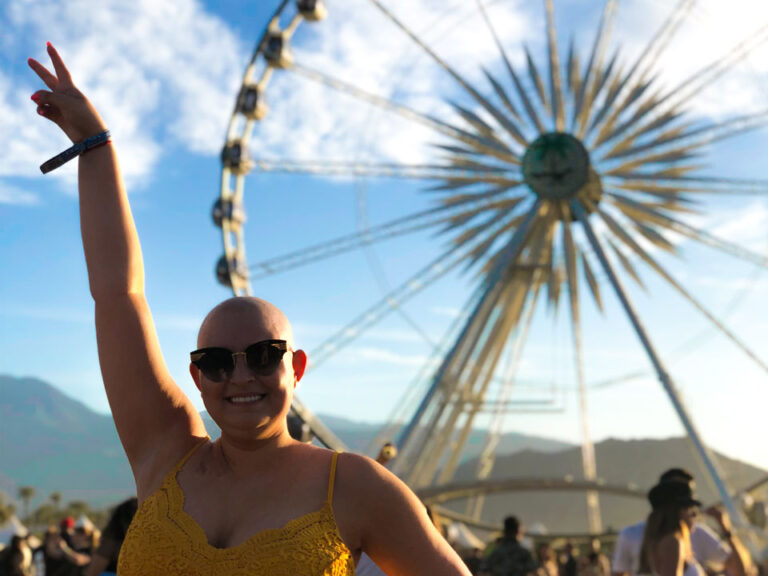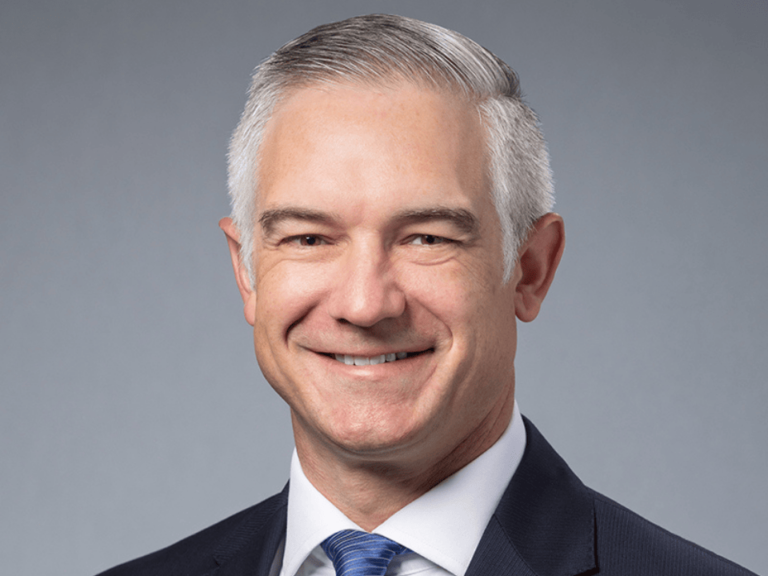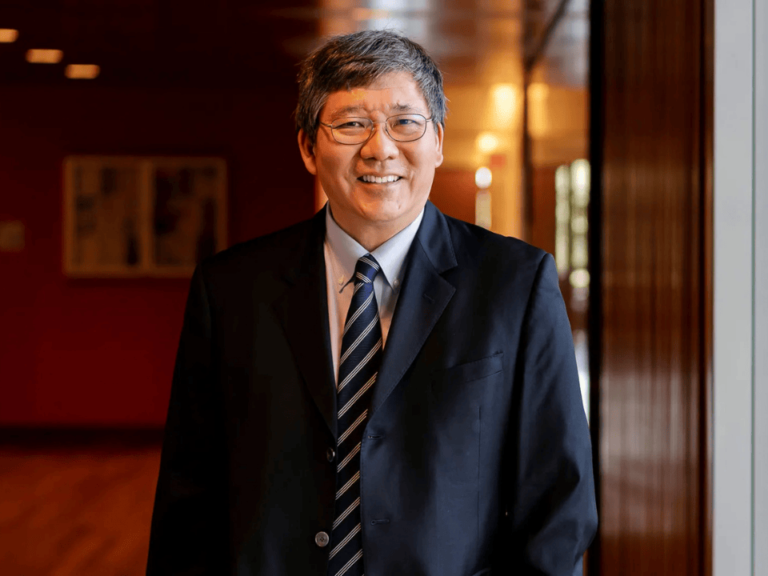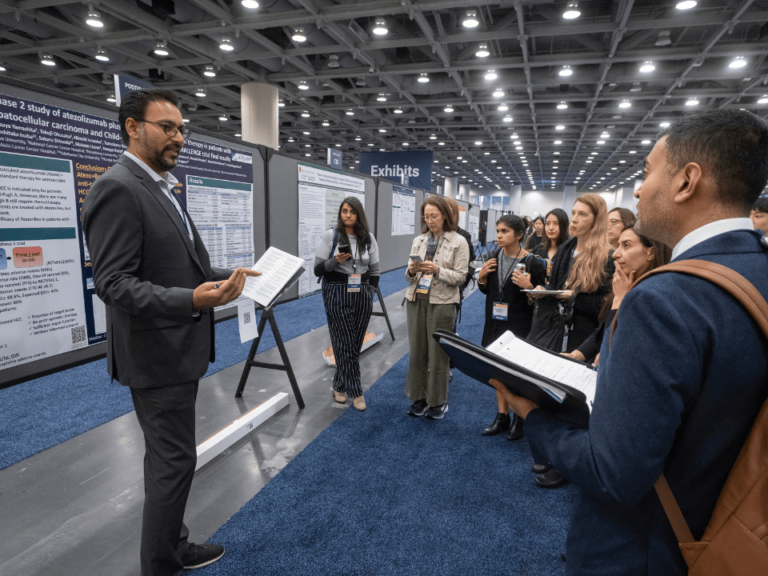Philip J. Stella, the principal investigator of the Michigan Cancer Research Consortium NCI Community Oncology Research Program site in Ann Arbor, won the 2019 Harry Hynes Award.
The award is given annually to NCORP PIs for outstanding contribution to clinical trials and community research.
Stella is the medical director of the Oncology Program at the St. Joseph Mercy Hospital Cancer Center in Ann Arbor.
The NCORP’s Harry Hynes award recognizes local community researchers who embody the attributes of the leadership and commitment demonstrated by Harry Hynes, a native of Ireland who came to Wichita, Kan., in 1960 and went on to become a pioneer in developing one of the nation’s first Clinical Community Oncology Programs in 1983.
Under Stella’s leadership, the Michigan consortium enrolled over 9,000 patients in clinical trials, including 5,301 patients who were enrolled in cancer control and prevention trials and 3,818 patients enrolled in treatment trials.
“I’ve put a lot of patients on trials, but I really pride myself on really helping other members of my practice and other hospital systems in their practices, to be able to put patients on, because what we really do is develop a different culture,” Stella said to The Cancer Letter.
“Putting patients on clinical trials in a private practice setting is difficult. But, we have developed, in all of our sites, a culture that’s very academic, where the docs within the NCORP basically say, ‘Is there a clinical trial for this patient?’,” Stella said.
“It’s foremost in their minds.”
Last month, NCI announced funded 53 new NCORP grants for the upcoming six-year grant cycle.
Previously, NCORPs were funded on a five-year cycle. NCORP sites can now be found in 44 states, the District of Columbia, Puerto Rico and Guam. A list of sites is posted here.
Four new sites were named: Maine Health Cancer Care Network NCORP, Atlantic Health Cancer Consortium NCORP, University of Kansas Cancer Center NCORP MU, and National Capital Area NCORP-MU. While most sites continued from the previous grant period, some changed names or were reconfigured, such as the Gulf South Minority/Underserved NCORP, which now covers the entire state of Louisiana.
“Clinical advancements in prevention and treatment approaches must benefit all cancer patients,” NCI Acting Director Douglas R. Lowy said in a statement. “The best way to make that a reality is to ensure clinical research is conducted in diverse populations—both ethnic and geographic diversity. Communities of color and rural communities face disadvantages in access to cutting-edge cancer care. We believe that clinical trials provide individuals with access to high quality cancer care. NCORP enables us to make this available to more communities.”
“There is clearly a growing level of interest among community physicians to have access to NCI-sponsored clinical trials for their patients and individuals at risk of cancer,” NCORP Program Director Worta McCaskill-Stevens said in a statement. “We have a greater number and more varied types of health systems getting involved in clinical research through NCORP than ever before. Research in more community settings and systems reflects the complexity of cancer care delivery, allowing for the development of care delivery approaches that can be implemented within usual clinical workflow.”
Stella spoke with Paul Goldberg, editor and publisher of The Cancer Letter.
Paul Goldberg: First of all, congratulations on winning the Harry Hynes Award.
Philip Stella: Thank you. I knew Harry Hynes personally; I’ve been around that long. I knew him from [the American Society of Clinical Oncology] and, of course, I knew from the [Community Clinical Oncology Program] days. Knowing the quality of care Harry gave his patients and his commitment to research makes this award all that much more special.
Harry not only ran a very busy CCOP, I think it was one of the highest accruers in SWOG, but he also developed leukemia himself and went on a clinical trial for leukemia. Unfortunately, that’s the disease he died of.
Can I ask you about your practice, what was it that made this award happen? You’ve put a lot of patients on trials, that’s for sure.
PS: Well, yeah, you know, I’ve been very interested in clinical research for years and years. Since 1993 I’ve been the medical director for the cancer program here at St. Joe’s Ann Arbor, and we got our own CCOP grant around that time.
It’s because of commitment to research that we went out and got that. And it’s grown over time. At first, we were a single institution, a CCOP would be St. Joe’s Ann Arbor. And then we brought in a number of other institutions within the what we call the Michigan Cancer Research Consortium, but that’s quickly getting outdated.
Our initial members were a lot of hospitals, not just the St. Joe’s system, but hospitals in southeastern Michigan, and extending up into central Michigan as well. We’ve grown beyond Michigan, with hospitals in other states, including Pennsylvania and New England.
At one time, we also had a site in Boise, Idaho. It’s actually growing pretty rapidly now. We’ve shown over years that we could do this kind of research and run this kind of network not just locally and regionally, but nationwide.
Now, we have a new member coming on from Florida in Fort Lauderdale—Holy Cross. And then we’re in discussions with a large Trinity organization, also in Indiana and Pennsylvania.
With that growth, we have been able to maintain the kind of quality that we have always enjoyed. And, it’s been very gratifying to see the growth of what’s still called the MCRC, or Michigan Cancer Research Consortium NCORP, and the contributions made by other investigators, a very dedicated group of investigators, that we’ve had for years and years.
What role have cancer clinical trials played in this growth?
PS: Of course, the network is to serve each community’s need for cancer clinical trials. We do that through various mechanisms. But, one of the things we all share is one of the driving forces is the realization and the commitment to what we feel very strongly about: that patients have a right to access clinical trials in the community.
That’s a right that we as oncologists, and our hospital partners take very seriously: to provide access to cutting-edge clinical trials in the communities where the patients are. And, of course, that’s the concept behind the NCORP.
That’s the thing that has driven us over the years—to expand our membership and help each of the sites be successful in doing clinical trials. Because it is not easy.
It’s a labor of love for each of the hospitals and practices—to commit the necessary resources and time, to make sure they’re providing these trials and providing them in a safe manner. We have a long track record in taking sites that have not been active in clinical trials and helping them be successful.
How large is the network now?
PS: It encompasses 11 hospitals, including Southeastern, Central Michigan, Pennsylvania, Massachusetts, soon to be Florida, Indiana and another site in Pennsylvania. And probably growing beyond that.
The Trinity Health System is our parent organization that holds fiduciary responsibility for the grant. We’ve been opening up the opportunity for other Trinity sites recently to be able to provide that access if they don’t have it.
We have shown physician and hospital administrators a better more cost-effective way to do trials which fits in nicely with busy oncology practices and won’t break the bank for the hospitals.
I have been blessed with some very committed oncologists and forward-thinking administrators early on, who recognized that access to trials was a right, and we should support it, and we should not use it to distinguish ourselves from other potential competitors in the marketplace but work with whoever has the need whether a potential competitor or not.
How many patients have you put on clinical trials?
PS: I’ve put a lot of patients on trials, but I really pride myself on really helping other members of my practice and other hospital systems in their practices, to be able to put patients on, because what we really do is develop a different culture.
Putting patients on clinical trials in a private practice setting is difficult. But, we have developed, in all of our sites, a culture that’s very academic, where the docs within the NCORP basically say, “Is there a clinical trial for this patient?”
It’s foremost in their minds.
We’ve developed that culture, and then, in addition, make it effective and efficient for them.
We have developed systems within each hospital system for the staff to go into the offices of the docs, wherever they’re at, and to really work with, and help them with all the documentation, assessment, toxicity and regulatory requirements.
I’m looking at the numbers. Your organization has put 5,301 patients on cancer control and prevention trials, and 3,818 on treatment trials since 1994; right?
PS: Right. And it’s growing, and the types of trials are getting more difficult. But I do want to tell you that part of our success has not only been the commitment of docs who share our vision about access and the need to really take the time to participate.
But we marry them with the staff at the institutions, to make it as easy as possible. So that, for an example, in our operations office we will do central registration and eligibility, provide all the regulatory work, a central IRB and single-signature contracting.
Years ago, when Harry Hynes was running his practice, the number of patients going on clinical trials has always been somewhere in the range of 2%, 3%–somewhere in there. Are you finding that the needle is moving in your institutions?
PS: Those sites that have NCORPs—I can certainly attest to ours—all have significantly more than 2% to 3%, which is the number you see in the literature. We’ll have anywhere from 15% to 20% of our patients at St. Joe’s going on clinical trials.
I would say all of our sites are going to be significantly higher than that 2% or 3%, because of the commitment of the doctors and the hospitals to make this happen.
Those are incredible numbers. Has anybody really looked at that, because that’s really significant movement.
PS: There’s no question about it. You have to have interested and committed investigators, and you have to have a staff at the site–and, in our case, also centrally, to help take care of putting patients on trial and following them in a manner that is necessary to do good quality work.
We know from multiple, multiple audits from the NCI that we’re doing high-quality work as we have never received an unacceptable audit, and we get audited 3-5 times a year by various groups.
Nevertheless, the trials are getting much more difficult than in the old days. Patient eligibility has tightened, and with the subsets of patients for various treatments getting smaller and smaller, it’s a real challenge.
How has next-gen sequencing changed your practice?
PS: You know that the clinical trials are getting more complicated; right? In the old days, you’d have one trial for every patient with metastatic lung cancer. Right? And you’d put a lot of patients on it.
Now, they’re more limited. You have one trial for ALK-positive, one for EGFR. We have seen the number of patients screened per patient going on trial mushroom to 10 to 20 to one. That’s a real challenge.
The numbers of each for each patient, there are all these categories, some have decreased in size. You need networks like the NCORP to get the numbers to complete these trials: how many ALK-positive patients are you going to find in any one institution or any one health system?
So, they become more complicated in terms of finding the patients, on one hand. On the other hand, the NCI has come up with basket trials, you know like ALCHEMIST and the MAP trial. So, that’s helped in that regard. But still, the number of people eligible for these trials is small and the amount of work significant.
That whole genome sequencing and molecular targeting boon has been good for us. Having the opportunity to participate in national trials like the MATCH trial and ASCO’s TAPUR trial, provide additional opportunities for patients when they have exhausted standard care.
And, if you look at our numbers nationally, we’re one of the highest accruing sites for both MATCH and TAPUR. We were actually one of the first sites that participated with Rich Schilsky, [ASCO senior vice president and chief medical officer], because we recognized early on that molecular targeting and molecular profiling was going to have a huge effect on patients.
And one of the things Rich Schilsky and I share is realization that we need to learn from all of these patients with molecular targets. We need to learn from them. We have to give them access to trials, because the last thing we needed to do is treat these patients off-trial, as one-offs, and never learn anything in the process.
That’s why studies like MATCH and TAPUR are so important. Because we collect very important data as to whether these approaches work or not. We do whole genome sequencing almost 100% of our patients and screen our patients for these trials.
Are you finding that patients are demanding those trials now?
PS: Well, they know about them. They know about molecular targeting and personalized medicine and occasionally we get a patient sent in for a specific trial.
What I do with every patient—whether they are a candidate at that time for a trial—is that we are an NCORP that has access to most of the cutting-edge trials through the cooperative groups and the NCI including molecular targeting and immunotherapy trials.
It really gives the patient some hope that they know that they’re at a site that will have access to these important trials.
We’ll have access to drugs years and years before they come on the market, because we’re doing the trials. Whether it’s part of the NCI system or not. NCI is only half of our accrual. We probably put as many patients on pharmaceutical trials as we do on NCI trials.
That must make up for the shortfall.
PS: Well, yeah, they help pay the bills. But we do it not just to pay the bills. We do it because we want access and some of these drugs are now being held closely by the drug companies, instead of the NCI.
So, we go to where the drug is, where the opportunities are, and we have a lot of drug companies approaching us and saying, “Will you work with us?” We’re fairly selective. We try to get a menu of trials with the best drugs out there.
Private practice is no longer just guys sitting there and churning and seeing the patients. The people in our NCORP who are investigators, they’re very, very active with the cooperative groups and sitting on steering committees and very engaged.
It helps to have great colleagues in doing this work, especially with the pace of new drug development. Tareq Al Baghdadi, my co-PI, is a really smart guy, and he’s taking over from me in the next few years as I wind down. Just like in academics, he focuses on molecular pathway and targets.
He sit on the TAPUR molecular tumor board. He was first author on one of the first abstracts published from TAPUR.
Another partner, Ellie Dib, is focusing on immunotherapy and is on the I MATCH steering committee. These are just a few of the incredibly bright investigators that I have the pleasure to work with, not just at St. Joe’s, but through the consortium.
So, private practice is no longer just guys sitting there and churning and seeing the patients. The people in our NCORP who are investigators, they’re very, very active with the cooperative groups and sitting on steering committees and very engaged.
So, we have a really nice niche here, a private practice environment of academic types committed to research. It helps us in recruiting. We got some really good people because of our clinical trials. What’s more it’s fun and exciting to be around people like that.
I think one of the most interesting stories that we are covering at The Cancer Letter now is this conversion of private practice and academic oncology; are you seeing what I’m seeing? Is this what’s really happening?
PS: You’re absolutely right. It’s not like the little community practices of old. These practices are where the bulk of patients are seen in the community.
They are very, very capable and bring more of an academic mindset to their communities. It really helps to have cooperative groups like the alliance which has recognized this for years and have turned to their community members for not just accrual, but ideas.
Just wait until you see what’s coming out of [the Alliance for Clinical Trials in Oncology] on value.
The other thing that’s happened recently is the new-found support and recognition of the role of the community in clinical trials through the NCORP Program.
Worta McCaskill-Stevens and the whole NCORP team have championed this for years. Not only are community researchers leading the way on accrual and performing important screening, prevention and cancer control research, but we are charged with developing cancer care delivery research which may have enormous implications in defining value in cancer care which I personally think is of great importance as we deal with ever increasing cost of care.
Are you seeing any movement in terms of metrics? It would be fascinating to see how you compare some practices with others, or the academic setting with community. Survival is notoriously the wrong metric for this. What’s the right way to do it?
PS: Comparison are always risky and metrics can be deceiving. Personally, I like to think in terms of partnerships and collaboration as academic programs have different priorities than community programs, both institutional based and private practice.
Delivery of care is getting harder and in my mind, you really do need a village. We need to focus on what is the best setting to delivery of care. Not every practice is going to have a bone marrow or CAR-T cell program and shouldn’t. On the other hand, delivery of care in the community is hard to beat in term of access and value.
Having said that we should embrace national standards of care such as ASCO’s QOPI [Quality Oncology Practice Initiative] program and the measures that Centers for Medicare and Medicaid Services is using for the Oncology Care Model. In addition, I would add pathway compliance. We need to embrace the inherent quality that value based pathways entail, and make it a CMS recognized quality measure.
If you were a savvy insurer, or a savvy auto company, or a savvy patient, you’d say that a group that follows nationally recognized best practice 85% of the time is likely better than a group that does it 50% of the time.
Measuring adherence to guidelines would be interesting.
PS: It would be very interesting. If you’re looking at efficacy, toxicity, and then costs, and why wouldn’t you use, what I call value based pathways, adherence as a measure.
Insurers are starting to embrace this and appropriately rewarding physicians on pathway or guideline compliance. As we move forward, though, it would be important to make sure physicians not insurance companies are defining the standards. It is also very important to include clinical trial participation in these standards.
Is there anything we’ve missed?
PS: I would just stress the importance of cancer care delivery research. We need to get a much better handle on defining value in care delivery.
The Alliance has developed a value based task force with medical economic expertise to inform and shape CCDR. We are in its infancy, but the NCI’s support through the NCORPs is a good starting point.
I do believe we need to bring the ultimate payers to the table, the large corporations, like the auto industry or Amazon as we design these studies, as what is important to them may, and likely will be, different from how we define it.
And it feeds back to the importance of the NCORP being a testing ground for these very important issues to define, not just, you know, the latest best drug, but also to define best ways of delivering care.
I am so excited about the prospects for where we’re at in research on the drugs, where we are at with cancer care delivery, and the prospects of really understanding value in health care.
That’s why I’m so excited about research in the community.
Thank you so much.













